
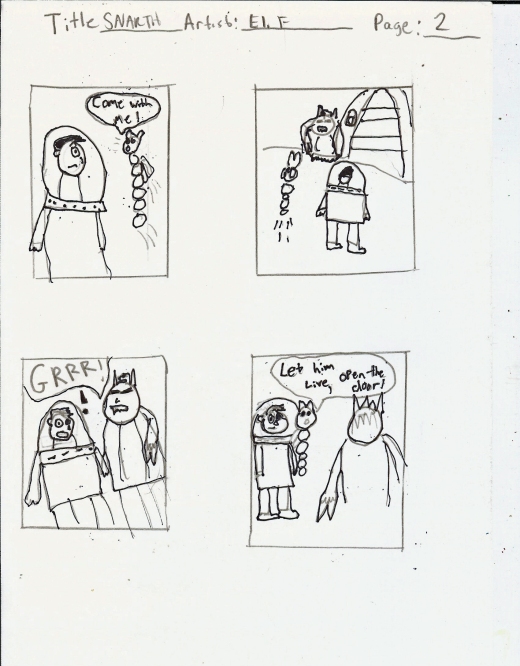
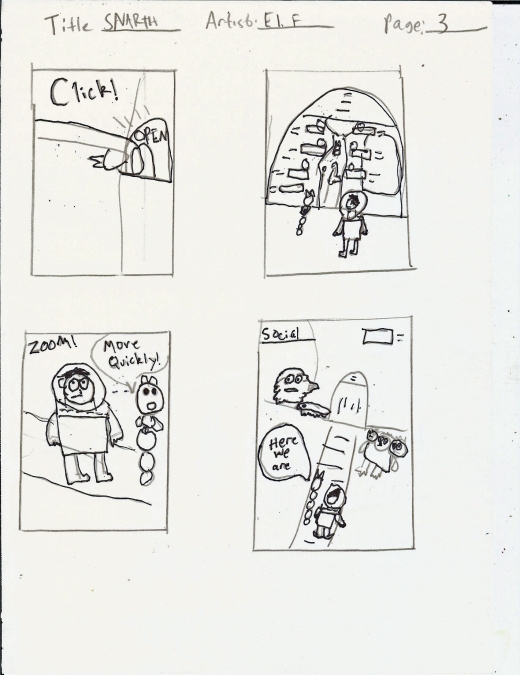


Tag Archives: 2016 Eli F.
Eli F.


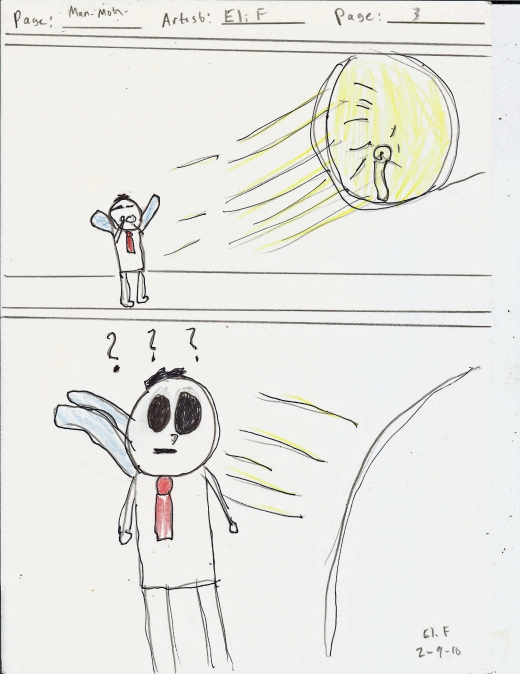
Eli F.: Through the Woods by Emily Carroll
For my third response paper I’ve decided to write about the book Through the Woods by Emily Carroll. My first observation would be that it definitely has some similar qualities to the original fairy-tales that most people are familiar with.
For example, the very last short chapter “In conclusion” shares similar characters like Little Red Riding Hood and the Wolf. However, Carroll makes it different as the red hooded little girl makes it through the woods without the “beast” attacking her.
She then goes to bed thinking that she got home so safely that the beast is just a myth. The beast goes to her window and says “I’ll be waiting for you tomorrow” which totally caught me off guard when reading that whole chapter.
Another observation I noticed is that that each story always has a certain twist towards the end of each chapter. Some of them I did see coming, but others I had no idea what to expect. The endings were well-written as I believe this is what Carroll intended for her audience reading her work.
I personally liked the art work throughout the book and Carroll never seemed to be scared of having the color black as her main background to present her stories. When reading this you can obviously see a more gothic style of drawing as Carroll presents some interesting imagery.
For example, the chapter “The Nesting Place” presents this images of worm-like creatures coming out of Rebecca’s face or the chapter “A Lady’s Hands Are Cold” as the lady digs out the dead body of her husband’s ex-wife and comes alive as this zombie creature.
It seems that a common idea that Carroll presents in each chapter is that the woods are a place were bad things always happen. All these stories have a certain climax that has something to do with a certain character doing something through the woods.
My first thought when I finished reading this book it brought me back to the moment were we all had to look up a certain fairy-tale from the Grimm Brothers. Both Carroll and the Grimm Brothers both have this certain pattern in each of their stories that they all end in a dark twist.
Some of the structures of the comics are all a little different than one another. Some have two or three panels and then this huge space occurs presenting this important part in the story.
I also noticed that it’s not all the same as Carroll mixes it all up and never uses the same basic 4-panel you see in comics.
Overall, all the stories are very well-organized as they have a beginning where the main characters are introduced.
We learn about more about the characters as the story plays out and while some are predictable, some you can’t quite put together.
In addition, they all have a different sort of problems that we as humans face in our lifetime. Whether it’s being jealous of your brother, hating your brother/sister’s fiancée, or maybe even noticing strange behavior from your friends.
Eli F: The Crow by James O’Barr
I am a proud super hero comic book fan and it was one of the reasons I chose to read this book.
The crow represents the idea that some souls of the dead are still left on earth and need to serve some sort of unfinished business until called upon on judgement day.
In this case, Eric knows his purpose is to kill all the gang members who killed his girlfriend and shot him in the head. He knows if he achieves this he can join his love in the afterlife or as he says in the book “home.”
The book presents a lot of action including windows breaking, gun fights, and one store owner gets stabbed in the hand by a knife. It’s also sad, showing great memories Eric once had when he was with his lover. The memories are illustrated in such a way as to have an angelic glow to them. These illustrations reveal Eric’s wish to have that special feeling once again.
While Eric is seen as a vengeful entity, he’s also very human at some points in the book, as when his cat brings him a special ornament and he has flashbacks of happy memories. When he comes back to reality, he tells the cat not to bring anything that makes him smile. He knows that he can’t go back to being that guy and rejects the idea of being happy ever again.
O’Barr does a great job getting the story well-constructed meaning that he mixes up the story with his events of killing and how he became “The Crow.”The black and white illustrations represent a Gothic setting where crime runs rampant and life seems hopeless.
I’ve read many superhero comics and I must say this is very different in terms of this sense of darkness, the depressing setting, and how this person has a crow to represent his sort of guardian angel. I like how Eric got what he wanted in the end by joining his lover at the end as he joined her in the afterlife.
As for James O’Barr, he’s a talented writer for a man who didn’t attend his art classes when he was growing up. I admired how he puts his own struggles of his own girlfriend’s death and puts this masterpiece together. “The Crow” was made into a feature film in 1994 which had the great Bruce Lee’s son, Brandon play Eric.
O’Barr is an interesting man and watching a video on him in class made me feel like participating in art classes will help you be better at writing and drawing. O’Barr, however, was already gifted for a man who kept to himself at school.
“The Crow” presents a great storyline and wonderful images, but also brings out a relatable character in Eric who goes after who did him wrong and who has feelings of having lost someone and wanting to be with her again.
Eli F.: Goliath by Tom Gauld
For my first graphic novel assessment I chose to read Tom Gauld’s Goliath. I noticed common patterns in the book. This is a re-telling of the Bible story of David and Goliath but it’s told in Goliath’s point of view right before the event happened.
Gauld shows Goliath as this huge person who towers over everyone in this story. However, he does not want any trouble and seems to always want to avoid conflicts or fights.
Goliath is accompanied by a 9-year-old boy who’s in charge of bringing him his shield. This boy seems to annoy Goliath at times in the story. For example, the boy is always asking him about the truth in the stories he’s heard from people in the village. In spite of him being curious, Goliath seems to care about the boy and makes sure no one hurts him.
Goliath is perceived as a fighter; however, he’s ranked fifth worst swordsman and clearly does not wish to fight. Rather, Goliath enjoys writing and reading on his big desk where he sits until interrupted.
Gauld shows Goliath as an outcast from society due to him being different and living alone in the rocks. Yet he is relied on as a protector for the village. Goliath is aware of this and he isolates himself from the world. Without clean water he drinks out of the lake near the town. The boy tells him about his Aunt being interested romantically, but he declines. Finally, he gets invited to watch an event where lions and bears fight, but he also declines.
I am reminded of certain movies about two characters complimenting one another and I see that in the boy and Goliath. You have one character who doesn’t seek companionship, but he puts up with it.
On the other hand, you have the other character seeking companionship and sees past all the flaws of the outcast and remains a loyal friend. The movie Shrek is a good comparison to this movie as both main characters Shrek and Donkey have similar characteristics you see in this book.
It seems that Guild wanted to focus on showing how human Goliath really is behind that rough exterior. The ending is very dark as it shows the Bible hero David finally standing up to Goliath after countless times Goliath had to read what the King had written for him for the enemy village across the field.
David smashes Goliath’s face and beheads him to recreate the authenticity of the original bible story. Everyone with a religious background really knows how Goliath is portrayed as this angry, dominant beast who could never be beaten. Instead, Gauld shows the opposite of how he’s portrayed in the original Bible stories.
Eli F.: With Eyes Closed
A series of drawings done in class with eyes closed and with the non-dominant hand.


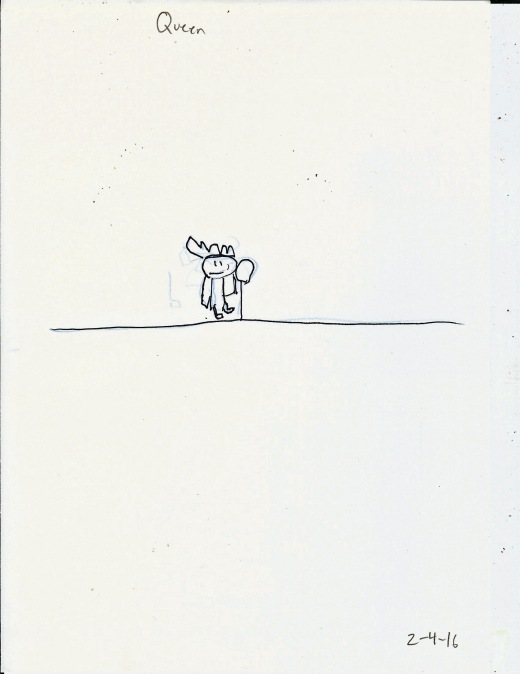

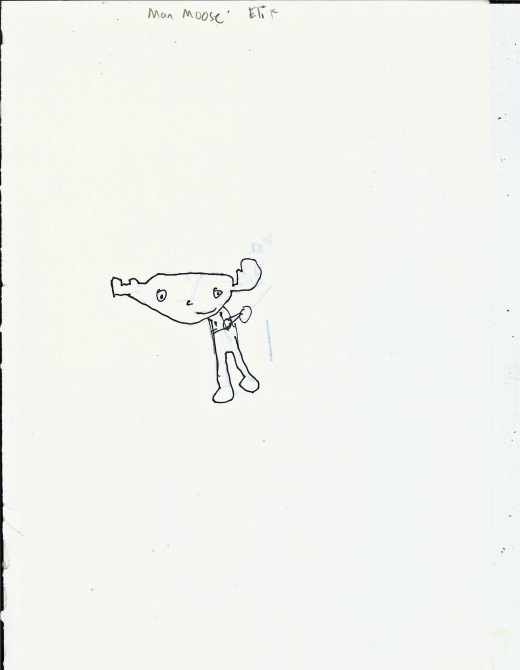






Eli F.: Comics as Haiku





Eli F.

Eli F.
